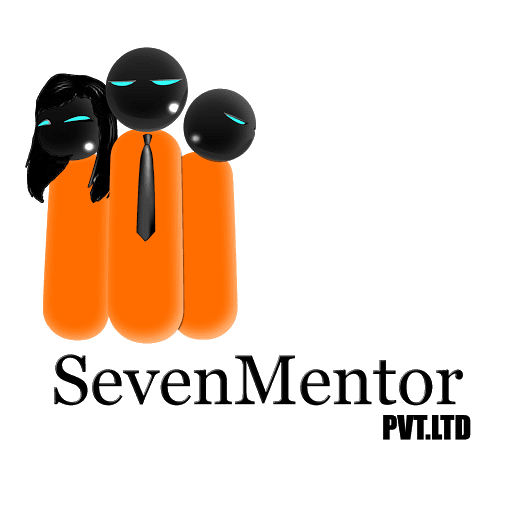Solving the Pandemic After the Pandemic-
Long COVID affects millions. It illustrates the need for a new medical paradigm.
Reviewed by Tyler Woods
KEY POINTS-
Long COVID research has been pioneered by patients, with the medical establishment playing catch-up.
A new paradigm for patient-centered health care is emerging, emboldened by new technological advances.
A new bottom-up approach for pursuing research could transform care for many hard-to-treat diseases.
We now stand at the meeting of two eternities, to borrow a line from Henry David Thoreau: the past and future.
That is the present moment.
On May 11, the Biden administration is slated to end the public health emergency for the COVID-19 pandemic. But although certain government services will end, the virus won't stop replicating and spreading, and its long-term effects on our immune systems still carry the same level of risk.
For tens of millions of people around the world, "the pandemic after the pandemic" is well underway.
Study after study shows that 10 to 30 percent of those infected with COVID-19 go on to develop symptoms of long COVID, including debilitating fatigue, post-exertional malaise, and brain fog, among as many as 200 other symptoms. A study from Harvard economist David Cutler estimates the long-term economic toll of long COVID at $3.7 trillion in the U.S. alone, a number that is on par with the Great Recession.
In shifting to this new phase of the pandemic, it's essential to refocus an all-of-society endeavor to offer treatments, services, and support for COVID long-haulers to preserve their dignity and their dreams.
As a society, we have always rallied to visions at the frontiers of the imagination: staring down the totalitarian menace in Europe during World War II, landing on the moon, and developing a vaccine in record time to quell the tide of a global pandemic. That's the magic of thinking big.
But just as we developed public-private vaccine distribution through Operation Warp Speed, we need a similarly ambitious set of policies to reckon with the long tail of the virus, how it's etched itself into the lives of tens of millions around the world in myriad ways seen and unseen. Many have debilitating symptoms that never left them after their infection; others carry invisible organ damage that leaves them vulnerable to sudden heart attacks or strokes years from now.
We need an Operation Warp Speed for long COVID.
As the public health emergency is set to end, there is no more important time in a generation to be evaluating how many important lessons the pandemic has taught us about ourselves and society, and how we can leverage this moment toward a new, better normal for science and health equity. So far, innovative patient groups were the first to research and write "the first textbook on long COVID," as the Los Angeles Times put it.
What they’ve taught us is a method for rethinking biomedicine more broadly and pursuing cures across all diseases.
Reinventing medicine, with patients at the center
In short, we may need an entirely new paradigm for how we think about medicine.
The idea of a "paradigm shift" was coined by philosopher Thomas Kuhn, in his book, The Structure of Scientific Revolutions. At inflection points in history, new ways of gathering or processing or even thinking about data radically rewrite the rules of the scientific enterprise itself.
New technology has spurred breathtaking new revolutions from the Human Genome Project, advances in supercomputing and big data, blockchain and Web 3.0, and most recently the blossoming possibilities of generative AI. Patients are likewise empowered in ways never seen in human history: we can use social media to form support groups across the globe while ill in bed, we can build our own patient registries to partner with research labs, and can generate our own data through smart watches, Oura rings, or other wearable devices. And new platforms even enable us to organize our own clinical trials.
All these changes add up to the full coming-of-age for precision medicine. This personalized approach is becoming more accessible to every man, woman, and child, with costs falling exponentially, and access to these technologies available through the iPhone in your pocket.
This new paradigm can and should be a patient-centered paradigm.
From a different vantage point, that was also the message from Psychology Today editor-at-large Hara Marano, after she wrote a harrowing feature story delving into the depths of physician burnout, and how it was leading higher rates of suicide among people who had dedicated their lives to health care.
But in their own way, the healers are hurting as much as the sick. Doctors allocate their time into 15-minute appointments, becoming cogs in a machine meant to fully optimize bureaucratic “relative value units” rather than to connect with a fellow human being in need. Constrained by the system, this leads to what’s called "moral injury." That’s when an individual is compelled to respond to or witness a system that runs contrary to their own ethical beliefs.
Studies from the American Medical Association show that 80 percent of physicians report burnout, and suicide rates among doctors outpace those in the general population. In short, a failure to embrace this more human-centered frame puts not just patients’ lives at risk, but physicians' lives as well.
But most importantly, forging a more humane way of thinking for doctors and patients can liberate all of us.
Welcome to the Revolution
In this new column, "Patient Revolution," I'll be chronicling these stories at the front lines of science and democracy. It's a breathtaking time to be alive, to be a science writer, and to have a foothold in helping forge the next generation of policies that can improve the lives of potentially billions of people around the world.
I'm excited to share the first volley of stories: in the coming weeks, I'll delve more into the movement to treat long COVID, the tales of those who laid the groundwork for the patient-led movement, and the stories of communities who are forging the new paradigm in medicine.
The human need is being met by patient entrepreneurs with long COVID who are creating new apps to track and manage symptoms, generating bottom-up solutions with patients rightfully claiming the mantle of true expertise. We'll explore how the Biden administration's new long COVID health report lays out a roadmap to use long COVID as a catalyst to roll out human-centered design principles across the health care system.
COVID long-haulers are just the latest example of how patients have harnessed emerging technologies to take back their own agency in medicine. I'll take you into some seminal experiences over the past decade through the Stanford Medicine X community with dozens of "ePatient Scholars"—such as a philosopher with brain cancer and a quadriplegic artist with multiple sclerosis—all challenged the health system to be better. I'll also peel back the curtain on my own creative process: I chronicled patients’ quest to change health care forever in my book The Long Haul. But it’s often not enough to just be a journalist covering the story. Stories cry out for action, and should compel us to roll our sleeves up to be part of the solution. I want every would-be creator to make their writing or art part of their own vision for their own future success or for inaugurating a better world.
These stories are constantly unfolding, across disease and discipline and demographic. The Wall Street Journal's Amy Dockser Marcus recently published the book We The Scientists, illustrating how families with children afflicted by the rare and deadly Niemann-Pick disease organized clinical trials to race toward a cure. Those families were pursuing their game-changing work, just as Brian Wallach, an alum of the Obama '08 campaign, was being diagnosed with ALS, the same terminal disease that felled baseball great Lou Gehrig and physicist Stephen Hawking. Determined to change that trajectory for himself and thousands of future patients, Wallach decided to tackle his medical care like a presidential campaign, galvanizing ALS advocates and leading toward a landmark $100 million bill signed into law that could transform ALS treatments. As Politico put it in a headline, "He was given six months to live. Then he changed DC." I believe that these sorts of moments can become the norm, rather than the exception.
At every step, this patient-led innovation requires relentless optimism, constant drive, and an unyielding audacity to change our own lives.
"If you hang out with the cowboys and the rebels and the pioneers, you will see the future faster," says Susannah Fox, a former chief technology officer for the U.S. Department of Health and Human Services, and the author of an upcoming book called Rebel Health.
Come hang out with me. And let's go see the future together.
Solving the Pandemic After the Pandemic-
Long COVID affects millions. It illustrates the need for a new medical paradigm.
Reviewed by Tyler Woods
KEY POINTS-
Long COVID research has been pioneered by patients, with the medical establishment playing catch-up.
A new paradigm for patient-centered health care is emerging, emboldened by new technological advances.
A new bottom-up approach for pursuing research could transform care for many hard-to-treat diseases.
We now stand at the meeting of two eternities, to borrow a line from Henry David Thoreau: the past and future.
That is the present moment.
On May 11, the Biden administration is slated to end the public health emergency for the COVID-19 pandemic. But although certain government services will end, the virus won't stop replicating and spreading, and its long-term effects on our immune systems still carry the same level of risk.
For tens of millions of people around the world, "the pandemic after the pandemic" is well underway.
Study after study shows that 10 to 30 percent of those infected with COVID-19 go on to develop symptoms of long COVID, including debilitating fatigue, post-exertional malaise, and brain fog, among as many as 200 other symptoms. A study from Harvard economist David Cutler estimates the long-term economic toll of long COVID at $3.7 trillion in the U.S. alone, a number that is on par with the Great Recession.
In shifting to this new phase of the pandemic, it's essential to refocus an all-of-society endeavor to offer treatments, services, and support for COVID long-haulers to preserve their dignity and their dreams.
As a society, we have always rallied to visions at the frontiers of the imagination: staring down the totalitarian menace in Europe during World War II, landing on the moon, and developing a vaccine in record time to quell the tide of a global pandemic. That's the magic of thinking big.
But just as we developed public-private vaccine distribution through Operation Warp Speed, we need a similarly ambitious set of policies to reckon with the long tail of the virus, how it's etched itself into the lives of tens of millions around the world in myriad ways seen and unseen. Many have debilitating symptoms that never left them after their infection; others carry invisible organ damage that leaves them vulnerable to sudden heart attacks or strokes years from now.
We need an Operation Warp Speed for long COVID.
As the public health emergency is set to end, there is no more important time in a generation to be evaluating how many important lessons the pandemic has taught us about ourselves and society, and how we can leverage this moment toward a new, better normal for science and health equity. So far, innovative patient groups were the first to research and write "the first textbook on long COVID," as the Los Angeles Times put it.
What they’ve taught us is a method for rethinking biomedicine more broadly and pursuing cures across all diseases.
Reinventing medicine, with patients at the center
In short, we may need an entirely new paradigm for how we think about medicine.
The idea of a "paradigm shift" was coined by philosopher Thomas Kuhn, in his book, The Structure of Scientific Revolutions. At inflection points in history, new ways of gathering or processing or even thinking about data radically rewrite the rules of the scientific enterprise itself.
New technology has spurred breathtaking new revolutions from the Human Genome Project, advances in supercomputing and big data, blockchain and Web 3.0, and most recently the blossoming possibilities of generative AI. Patients are likewise empowered in ways never seen in human history: we can use social media to form support groups across the globe while ill in bed, we can build our own patient registries to partner with research labs, and can generate our own data through smart watches, Oura rings, or other wearable devices. And new platforms even enable us to organize our own clinical trials.
All these changes add up to the full coming-of-age for precision medicine. This personalized approach is becoming more accessible to every man, woman, and child, with costs falling exponentially, and access to these technologies available through the iPhone in your pocket.
This new paradigm can and should be a patient-centered paradigm.
From a different vantage point, that was also the message from Psychology Today editor-at-large Hara Marano, after she wrote a harrowing feature story delving into the depths of physician burnout, and how it was leading higher rates of suicide among people who had dedicated their lives to health care.
But in their own way, the healers are hurting as much as the sick. Doctors allocate their time into 15-minute appointments, becoming cogs in a machine meant to fully optimize bureaucratic “relative value units” rather than to connect with a fellow human being in need. Constrained by the system, this leads to what’s called "moral injury." That’s when an individual is compelled to respond to or witness a system that runs contrary to their own ethical beliefs.
Studies from the American Medical Association show that 80 percent of physicians report burnout, and suicide rates among doctors outpace those in the general population. In short, a failure to embrace this more human-centered frame puts not just patients’ lives at risk, but physicians' lives as well.
But most importantly, forging a more humane way of thinking for doctors and patients can liberate all of us.
Welcome to the Revolution
In this new column, "Patient Revolution," I'll be chronicling these stories at the front lines of science and democracy. It's a breathtaking time to be alive, to be a science writer, and to have a foothold in helping forge the next generation of policies that can improve the lives of potentially billions of people around the world.
I'm excited to share the first volley of stories: in the coming weeks, I'll delve more into the movement to treat long COVID, the tales of those who laid the groundwork for the patient-led movement, and the stories of communities who are forging the new paradigm in medicine.
The human need is being met by patient entrepreneurs with long COVID who are creating new apps to track and manage symptoms, generating bottom-up solutions with patients rightfully claiming the mantle of true expertise. We'll explore how the Biden administration's new long COVID health report lays out a roadmap to use long COVID as a catalyst to roll out human-centered design principles across the health care system.
COVID long-haulers are just the latest example of how patients have harnessed emerging technologies to take back their own agency in medicine. I'll take you into some seminal experiences over the past decade through the Stanford Medicine X community with dozens of "ePatient Scholars"—such as a philosopher with brain cancer and a quadriplegic artist with multiple sclerosis—all challenged the health system to be better. I'll also peel back the curtain on my own creative process: I chronicled patients’ quest to change health care forever in my book The Long Haul. But it’s often not enough to just be a journalist covering the story. Stories cry out for action, and should compel us to roll our sleeves up to be part of the solution. I want every would-be creator to make their writing or art part of their own vision for their own future success or for inaugurating a better world.
These stories are constantly unfolding, across disease and discipline and demographic. The Wall Street Journal's Amy Dockser Marcus recently published the book We The Scientists, illustrating how families with children afflicted by the rare and deadly Niemann-Pick disease organized clinical trials to race toward a cure. Those families were pursuing their game-changing work, just as Brian Wallach, an alum of the Obama '08 campaign, was being diagnosed with ALS, the same terminal disease that felled baseball great Lou Gehrig and physicist Stephen Hawking. Determined to change that trajectory for himself and thousands of future patients, Wallach decided to tackle his medical care like a presidential campaign, galvanizing ALS advocates and leading toward a landmark $100 million bill signed into law that could transform ALS treatments. As Politico put it in a headline, "He was given six months to live. Then he changed DC." I believe that these sorts of moments can become the norm, rather than the exception.
At every step, this patient-led innovation requires relentless optimism, constant drive, and an unyielding audacity to change our own lives.
"If you hang out with the cowboys and the rebels and the pioneers, you will see the future faster," says Susannah Fox, a former chief technology officer for the U.S. Department of Health and Human Services, and the author of an upcoming book called Rebel Health.
Come hang out with me. And let's go see the future together.






